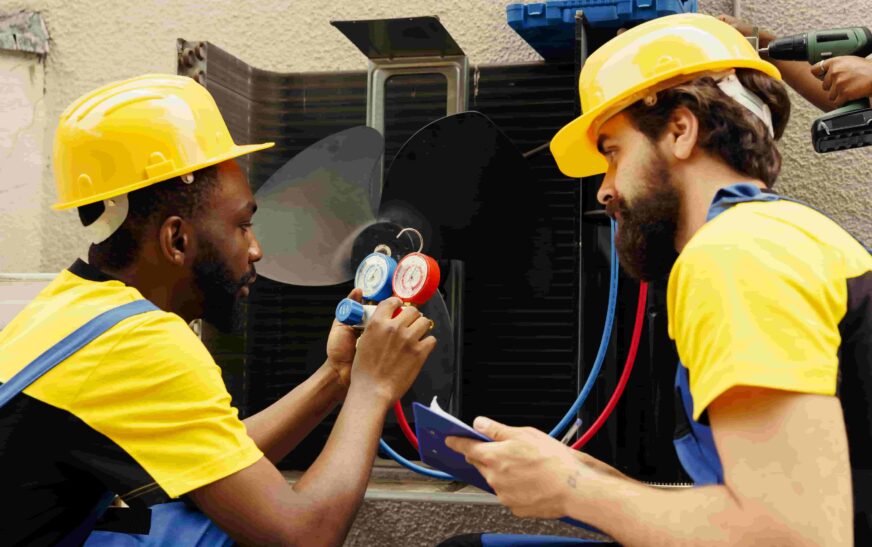Introduction
Air source heat pumps (ASHPs) are an innovative and energy-efficient solution for heating and cooling homes. These systems transfer heat from the outside air to the inside of a building, providing a comfortable indoor environment year-round. Whether you’re looking to reduce your carbon footprint or lower your energy bills, ASHPs offer a viable option. This article will explore the benefits of air source heat pumps, guide you through the installation process, and provide considerations to keep in mind.
Benefits of Air Source Heat Pumps
Energy Efficiency
Air source heat pumps are known for their high energy efficiency. They can deliver up to three times more heat energy to a home than the electrical energy they consume, making them an excellent choice for reducing energy consumption.
Environmental Impact
ASHPs use renewable energy from the air, significantly reducing greenhouse gas emissions compared to traditional fossil fuel heating systems. They are an environmentally friendly option that helps combat climate change.
Cost Savings
While the initial investment in an air source heat pump can be higher than conventional heating systems, the long-term savings on energy bills can be substantial. Additionally, many regions offer incentives and rebates for installing energy-efficient systems.
Versatility
Air source heat pumps can be used for both heating and cooling, providing year-round comfort. They work effectively in a variety of climates, making them a versatile choice for many homeowners.
Installation Process
Step 1: Site Assessment
Before installation, a professional installer will conduct a site assessment to determine the best location for the heat pump. This involves evaluating the outdoor space, assessing existing ductwork, and ensuring that the electrical system can support the new equipment.
Step 2: Choosing the Right System
Selecting the appropriate size and model of an air source heat pump installation is crucial. An undersized system may struggle to meet your heating and cooling needs, while an oversized system can be inefficient. The installer will help you choose a unit that matches your home’s requirements.
Step 3: Installing the Outdoor Unit
The outdoor unit, which houses the compressor and fan, is typically installed on a concrete pad or mounted on brackets. It should be placed in a well-ventilated area with enough clearance to ensure proper airflow.
Step 4: Connecting the Indoor Unit
The indoor unit is connected to the outdoor unit via refrigerant lines. This unit can be a ducted system that integrates with existing ductwork or a ductless system with individual room units. The installer will ensure that all connections are secure and that the refrigerant levels are optimal.
Step 5: Electrical Connections
The heat pump must be connected to the home’s electrical system. This step involves wiring the unit to the electrical panel and installing any necessary circuit breakers. A qualified electrician will handle this part of the installation to ensure safety and compliance with local codes.
Step 6: Testing and Commissioning
Once installed, the system will be thoroughly tested to ensure it operates correctly. This includes checking the thermostat, refrigerant levels, and airflow. The installer will also provide you with a demonstration of how to use and maintain the system.
Considerations and Tips
Climate Suitability
While air source heat pumps are effective in various climates, their efficiency can decrease in extremely cold temperatures. In such cases, a backup heating system may be necessary.
Maintenance
Regular maintenance is essential to keep your air source heat pump running efficiently. This includes cleaning or replacing filters, checking refrigerant levels, and inspecting the system for any potential issues.
Noise Levels
Some outdoor units can be noisy, so it’s important to consider the placement of the unit to minimize disruption. Modern units are designed to be quieter, but it’s still a factor to keep in mind.
Financial Incentives
Explore any available financial incentives, rebates, or tax credits for installing an energy-efficient heat pump. These can significantly offset the initial investment cost.
Conclusion
Air source heat pumps offer a range of benefits, from energy efficiency and cost savings to environmental sustainability. Understanding the installation process and keeping key considerations in mind can help ensure a successful transition to this modern heating and cooling solution. If you’re considering installing an air source heat pump, consult with a professional installer to assess your home’s needs and take the first step toward a more energy-efficient future.
Feel free to submit more guest posts through Links Building Servcies - Best Prices. Buy Author Account / 1$ Guest Post Here
























